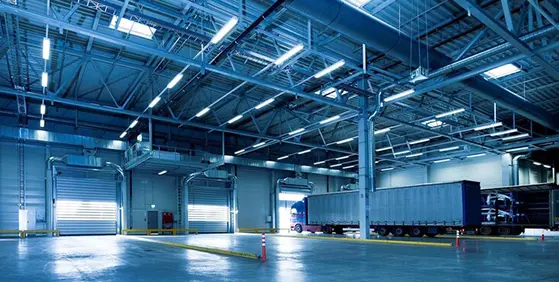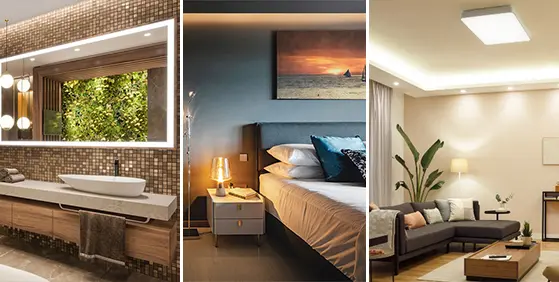How to Choose LED Garden Outdoor Lights?
Lighting your garden plays an important part in creating an inviting, safe and beautiful outdoor space. Garden lights highlight key features such as trees, sculptures and water installations while making pathways, stairs and entrances visible at night. LED technology is becoming an increasingly popular way to illuminate interiors, but can you use them outside?
Not only can you use them outside, but they are more suited to changing weather conditions than filament bulbs because they do not rely on heat to function. This outdoor lighting buying guide will walk you through the process of selecting lights to use in your garden and how outdoor LED lighting can be maintained.
Different Types of Outdoor Lights
There are several types of outdoor lights that be used in your garden which provide different levels of coverage to accent specific features.
Decorative lighting options are usually purely aesthetic, with smaller beams to provide ambience. String and lantern lights create warm flecks of gentle light to adorn walls, gazebos, branches or guttering. If you want to permanently install them, it is best to opt for mains-operated lights with waterproofing. Wall lights generally illuminate a concentrated area such as a doorway or house number. In-ground lights are embedded in the ground and lie flush to the surface. If they are IP68 rated they can be completely submerged in water. They can also be used to light paths and driveways.
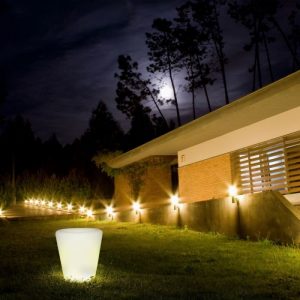
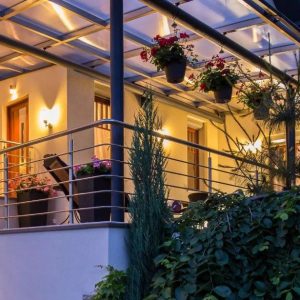
Deck lighting is fixed into the wood to light any decking areas. Step lights illuminate the step face to make any stair areas safer to navigate. Bollard lights can beam in 360 degrees or in one direction, perfect for larger driveways and lawns. Spike lights are pushed into the ground with a light mounted on top to show garden paths or flower beds.
Floodlights have a wide beam and can be used for added security if they have a PIR sensor. They create a general wash of light that can diminish the effects of other lights. Spotlights are generally mounted and can create a wide or narrow beam of light depending on the scale of what they are illuminating.
How do I choose a garden light?
In order to light your garden at night effectively, planning is key. Several factors will dictate what you can choose including where your power sources are located, the landscaping of your garden, which areas need lighting to be safe if you need security lighting and the type of weather or surface the fittings will be exposed to.
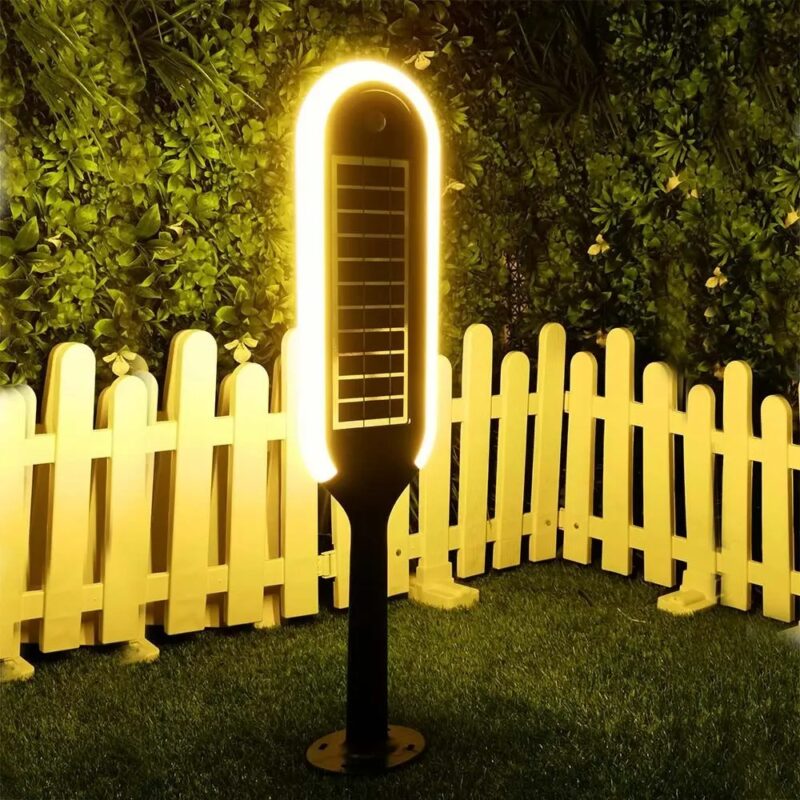
You need to be able to connect to mains power unless you are using battery-operated or solar lights. The design of your garden will inform what you want to highlight and the aesthetic you want to create. Remember that light should be contrasted with the dark and that the more subtle the better. Often yellow, warmer colours create a cosier environment instead of a harsh white light. You can light hazardous areas such as pathways, steps and slopes for easy movement around the garden at night.
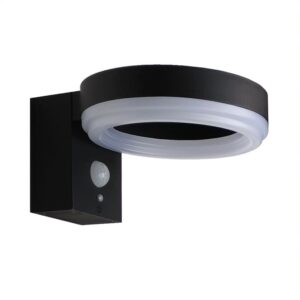
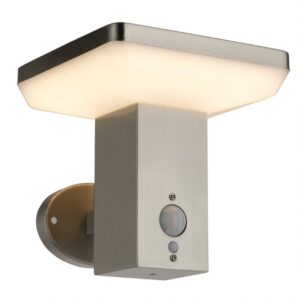
Durability is key with any type of outdoor lighting. The material of the fixings must be able to withstand corrosion and weather conditions. For the light itself, you must check the IP rating. An IP rating tells you how your light copes with penetrating solids like dust or soil in its first number. The highest rating is 6, meaning it will not allow solid particles into the light. The second number indicates a light’s tolerance to water. A rating of 6 can withstand heavy rain and a rating of 8 means it can be completely submerged in water.
How to install LED garden lights?
You can install LED garden lights yourself by taking the correct safety precautions if you feel confident in doing so. If you would rather hire a professional you can.
Before starting, the mains power and the breaker must be switched off. Each circuit should be socket tested, as should any finished work before use. It is important that you adhere to Building Regulations as well as IEE Wiring Regulations.
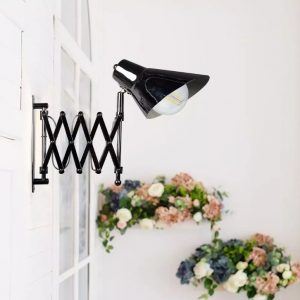
First, identify your power source and plot where any cables need to go to reach it. It is safest to use a low voltage cable such as a 12v wire. Wires must follow the edge of a wall or path as much as possible to help keep them safe from damage and to prevent a trip hazard. It is important that any connectors and wiring are insulated and waterproof. If you intend to lay wiring in the ground, it must be buried at least 6 inches deep so that you cannot damage the cable when gardening. In-ground lights must be buried at a depth that puts the surface level with the ground to protect it best.
Low voltage cables make for easier DIY installation, as do spike lights. Lights that are powered by solar energy or battery are the safest to install yourself as they do not require mains power.
How do I protect my garden lights?
Protecting your garden lights well stems from sensible planning and installation. It is best to have RCD protected sockets as they will stop the flow of electricity if a cable gets cut. Surge protectors are also a sensible addition as they ground any extra electricity so as not to overwhelm the fitting. All cabling should be suitable for outdoors and only waterproof lights should be left outside, otherwise, they need to be brought in after use. Even when they are outdoor rated, weatherproof and water-resistant, they should be shielded from the elements as much as possible. You can buy light shields to sit over a light fixture as a simple, low-cost solution.
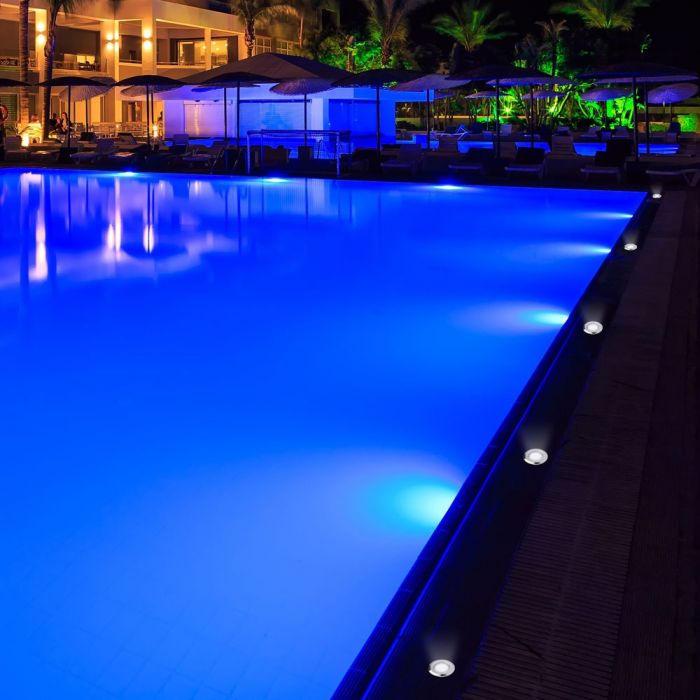
All lights should be cleaned regularly and bugs should be kept away from wires and fixtures as much as possible. Damaged lights or incorrectly installed cabling can produce an electric shock detrimental to your lighting and also to your own health.
How bright should outdoor garden lights be?
Lighting should always be used sensibly and not interfere with the enjoyment of surrounding buildings. Light pollution should be avoided wherever possible.
Most outdoor lighting should sit between 300 and 400 lumens. This will create a bright light without it becoming unbearable or damaging the eyes. This should correlate to an LED bulb between 7 and 9 watts. It is possible to find outdoor lighting of up to 1300 lumens, but you must consider if the brightness is suitable for the placement of the light.
In terms of colour temperature, LED lights range from warm white to cool white. Cool white look most natural when illuminating trees and plants as the shape of the plant will diffuse the brightness. For communal or entertaining areas, a warmer, softer light creates a comfortable and relaxing atmosphere.
FAQs
Do LED Garden lights work well in cold weather?
LED lights excel in cold weather compared to traditional lighting. LEDs do not need heat to illuminate, just electricity.
Are garden lights safe?
Garden lights are safe if they are installed correctly. If you need advice, you can seek help from a professional or a manufacturer.
Is warm white or cool white better for the garden?
Generally speaking, warm white is better. It is softer and more comforting. To illuminate features such as trees, you can consider cool white.
How do I repair solar-powered LED garden lighting?
Always check a solar light is switched on, that any pull tabs have been removed and that the batteries are working. Any solar lights should be placed where they can absorb the most sunlight. The solar panels need to be clean. If it still does not work switch the light off and leave it for 72 hours to charge as much as possible.
How do I repair LED garden lights?
LED lighting has an incredibly long life and very rarely burns out. If your LED light has stopped working, check for any damage to the device or its circuitry. It may need to be replaced.
How long does outdoor solar lighting last?
The rechargeable Ni-Cad batteries last around 2 years. LED bulbs can run for up to 100,000 hours. The weather will affect how long a solar light stays on at night, as this will determine the amount of solar energy it can absorb during the day.
How do solar lights work?
The solar cells absorb energy from the sun during the day. When the photoresistor can no longer detect light, it will activate the battery to power the bulb.





